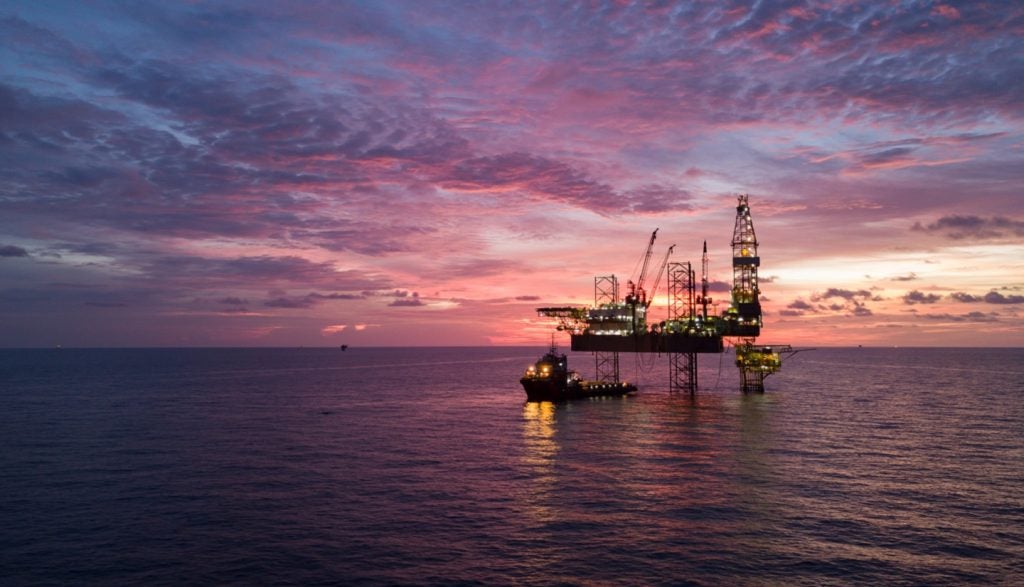
The onset of the Covid-19 pandemic annihilated oil demand, sent prices plummeting, and left an industry managing a long-term structural decline in the midst of a more immediate crisis. Whether it was travel restrictions and social distancing requirements interfering with day-to-day operations on oil rigs, or large-scale engineering works forced to go on ice – the pandemic has at times seemed tailor-made to frustrate and stifle the offshore industries.
In the midst of a pandemic and a price crash however, South America’s offshore oil industry has continued to grow. Energy research firm Rystad said that it expects activity on the continent to lead the recovery of offshore projects, citing lower breakeven prices and competitive payback times compared to projects in other parts of the world as making South America’s offshore projects more resilient.
Analysis from GlobalData predicts that South America’s offshore production will surpass North America’s by 2024 – so which countries are set to benefit from booming offshore activity?
Guyana
Guyana is one of the newest crude oil producing nations in the world, only making its first commercial grade crude oil draw at the tail end of 2019.
A spate of discoveries off Guyana’s coast in recent years offered a dramatic change to the country’s fortunes. ExxonMobil Guyana has made 18 discoveries since May 2015, and the company operates the Stabroek, Canje, and Kaieteur Blocks.
The deal between Guyana and ExxonMobil will see the nation receive just over half of the offshore oil revenue generated once the company’s exploration costs have been repaid – with Guyana’s GDP potentially rising from $5.1bn in 2019 to around $13bn by 2025.
How well do you really know your competitors?
Access the most comprehensive Company Profiles on the market, powered by GlobalData. Save hours of research. Gain competitive edge.

Thank you!
Your download email will arrive shortly
Not ready to buy yet? Download a free sample
We are confident about the unique quality of our Company Profiles. However, we want you to make the most beneficial decision for your business, so we offer a free sample that you can download by submitting the below form
By GlobalDataMore than a third of Guyana’s roughly 800,000 citizens live below the poverty line. Pre-pandemic projections forecast that Guyana’s first-stage offshore projects would ramp up to 750,000 barrels per day by the middle of this decade – producing almost one barrel a day for every Guyanese person – with the state’s revenues able to massively overhaul healthcare, education, and infrastructure in the country.
Already, the first phase of ExxonMobil’s Liza project is operating at its full capacity of 130,000 barrels per day. In March, Guyanan President Irfaan Ali said that he expects an additional 10 exploration and appraisal wells to be drilled offshore this year. Phase 2 of the Liza project is set to commence in 2022.
Suriname
While offshore Guyana has been the site of the bulk of recent discoveries, neighbouring Suriname has proven attractive for oil majors looking to get in at the other side of the Guyana-Suriname basin.
In December 2019, Total began its entry into the country when it signed an agreement with Apache Corporation to acquire a 50% interest and operatorship in Block 58 offshore Suriname, located on trend with the Stabroek block in Guyanese waters. At the start of 2021, Total announced its fourth significant discovery off the coast of Suriname. The company has its sights on developing Block 58 and expects first oil by 2025.
Suriname’s economy was hit hard by the Covid-19 pandemic, with GDP contracting by 13.5% in 2020 according to the International Monetary Fund (IMF). The government is hoping to court oil investment and replicate some of Guyana’s exploration success as a means to accelerate a recovery – the IMF expects Suriname to have one of the slowest post-pandemic economic rebounds on the continent.
Helping these endeavours is Suriname’s favourable regulatory framework for energy companies, with a royalty rate lower than many other countries in South America.
The potential of Suriname as a significant offshore player was seemingly acknowledged by the US in 2020, with Mike Pompeo becoming the first US Secretary of State to visit both Suriname and Guyana in the final months of the Trump administration. Pompeo sought to pitch American partnerships to both countries’ new leaders in a bid to stifle Chinese influence in what could shape up to be a strategically vital region for the global superpowers.
Brazil
September 2020 saw Brazil become the third largest supplier of crude oil to China, and the country dominates global deployment of upcoming floating production storage and offloading units, with 18 expected to be deployed offshore Brazil by 2025 according to GlobalData.
Among major offshore producing regions worldwide, Brazil and Guyana are expected to account for more than a third of offshore investments and capacity to be sanctioned in the first half of this decade.
Brazil owes much of its boom to the discovery of the Tupi oil field 15 years ago. Tupi is the world’s largest deepwater oil field and, in the summer of 2020, hit the milestone of two billion barrels of oil equivalent produced in the decade since production began.
Tupi is operated by Brazilian state-owned Petrobras, which recently announced an agreement to acquire BP’s stakes in six blocks located in ultra-deepwater offshore Brazil. Through 2020, Petrobras was able to grow its oil production despite the pandemic, and by sheer scale has been a driving force of the offshore oil boom on the continent – Petrobras alone accounted for almost 88% of South America’s deepwater operational expenditure between 2013 and 2020.




